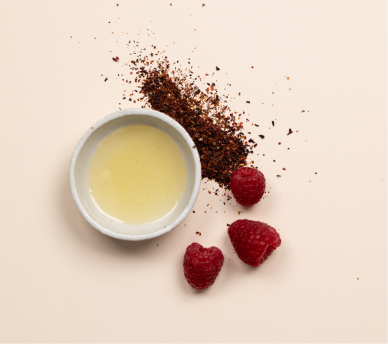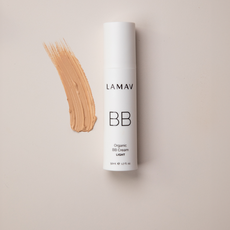What is “pH balance” and why should you care about it?
Want to know what is "pH" and why keeping it
What is pH?
When we mention pH balance most of you are immediately teleported back to chemistry class. Wasn’t your favorite class, was it? I guess it wasn’t exciting to listen about oxidation, entropy, and carbon, that is why I’ll try to keep it brief with a few need to know facts!
-pH is a measurement for acidity or alkalinity
-varies from 0 to 14, 7 being the neutral zone
-pH below 7 is acidic and above 7 is alkaline
And yes, keeping the balance between acidity and alkalinity is very important in terms of your overall health, because even though it’s true that your organism does it its best to maintain it, it would be good if you help it as well. Enough said. Let’s go back to your skin.

The pH of your skin
When you are born the pH of your skin is 7 (neutral). After several days it starts changing, becoming acidic, forming the so-called “acidic mantle”- a natural shield for fighting bacteria off and protecting your skin (the largest organ in your body that serves as a barrier between you and the world around you).
Normally the pH of your skin during almost your entire life is between 4.5 and 6 (Oily skin usually has pH around 5.5-6 and dry skin around 4.5).
It’s important to note that all substances that your skin comes in contact with (lotions, soaps, toners and also external factors like water, wind, smoke) have a direct effect on the skin’s pH.
Image via Paul Goyette
Acidic or alkaline – how does it make a difference for your skin?
To put it simply – bacteria do not like acidic conditions.
Acids have a bacteriostatic effect (suppressing the growth of bacteria) and are even able to kill some strains, depending on their sensitivity to acidic conditions. That is why oily skin, being closer to alkaline (due to the increased sebum production), is more susceptible to infections since bacteria grow and develop in more alkaline conditions (this is the reason, why the main function and purpose of most anti-acne products is to balance pH)
Besides that, according to an article published by The British Journal of Dermatology once your skin’s pH starts becoming more alkaline the risk of sun damage and premature aging significantly increases.
How does your skin maintain balance?
If your pH balance is disrupted, your skin won’t leave it like that – it has natural mechanisms to return the equilibrium.
The sweat we produce contains salts and microelements that tend to make the skin more acidic, while the sebum makes it more alkaline. Staphylococcus epidermis (a “good” bacteria that lives on our skin) has the ability to metabolize sebum and the byproducts released are actually increasing skin’s acidity – this way the good bacteria is protecting you from another harmful one.
The important thing here is that even though our skin has its compensatory ways for maintaining its balance we shouldn’t rely on that, we have to pick our products wisely.
What can disrupt the pH balance of your skin?

One of the most common ways you can disrupt the pH balance of the skin is by using regular soap or harsh cleansers due to their highly alkaline properties (ph between 9 and 11).
Not only do they alkalize your skin (allowing bacteria to do what they want) but they also break down the epidermal lipids that serve as a protective barrier and help our skin maintain its healthy look, be preventing water from evaporating.
Flaky, dry, dull skin that is easily irritated?
Maybe it’s time to consider changing your cleanser. Do not be misled and don’t confuse the feeling of “squeaky clean skin” with actual cleanness – one has nothing to do with the other. “Squeaky skin” often means dried our skin that has lost all of its sebum, which as you can guess is not a good thing at all.
Always look for non-soap cleansers that do not contain surfactants/detergents!
Image via Classic Film
5 ways you can maintain healthy pH levels:
1. Stop overwashing your face
Water has pH 7 and the presence of alcohol in your skincare products is another factor that changes the normal pH of your skin and leads to changes in its structure and the way it functions.
2. Avoid aggressive soaps
If you have naturally dry skin, prone to irritations it means, as mentioned above, that its pH is more alkaline, so for you avoiding aggressive soaps is an absolute must, because making your skin even more alkaline will aggravate significantly the problems you already have.
3. Use a moisturizer
Underestimating the importance of a good moisturizer, can also result in the disrupted skin barrier and therefore changes in pH. Our skin needs regular hydration in order to maintain its balance and stay healthy. And if your skin is healthy it will show on the outside, be sure.
I encourage you to shop around for your favorite, but if you are struggling with dry skin and would like an organic alternative, you might be suited to La Mav’s Hyaluronan Daily Moisture Crème.
Hyaluronan Daily Moisture Crème – $39.95 Add to Cart
Wake up to healthier, more youthful, and smoother skin every day, organically!
We asked you on Facebook what you do to keep your skin healthy and balanced, here are the best answers!

4. Excessive sun exposure
External factors like excessive sun exposure, too dry or too cold climate and bad habits like smoking, drinking too much alcohol and not enough water along with stress, lack of sleep and hormone imbalance also affect the pH levels in your body, which sooner or later “shows” on your face as well.
5. Your diet
Last but not least, another aspect that you should not overlook is your diet – if you disrupt the pH in your body, by eating the wrong food (too much sugar, simple carbs, alcohol, etc.) it will show off on your skin as well. A variety of fresh fruits and vegetables must always find their place in your plate! Always try to buy local, and organic produce!
We hope you have learned exactly “what is pH balance” for your skin and how you can ensure you have healthy skin! If you still have questions, please reach out to us by leaving a comment below. If you liked this post, let us know by sharing it!











